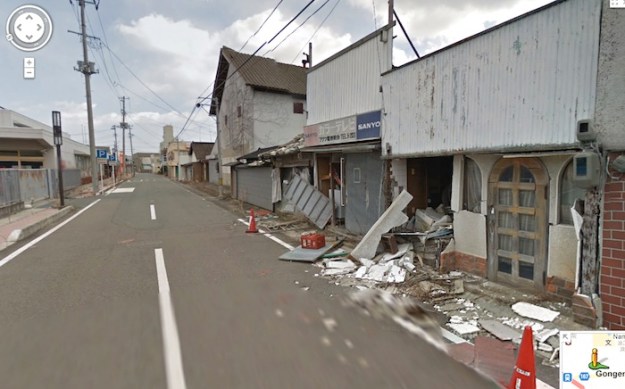 When the tsunami and earthquake struck north-east Japan in March 2011, the devastation caused multiple meltdowns at the Fukushima nuclear plant, which in turn resulted in the rapid evacuation of nearby towns such as Namie, population 21,000.
When the tsunami and earthquake struck north-east Japan in March 2011, the devastation caused multiple meltdowns at the Fukushima nuclear plant, which in turn resulted in the rapid evacuation of nearby towns such as Namie, population 21,000.
Two years on, an exclusion zone around the town remains in place, with the displaced residents still wondering when, or even if, they’ll ever have a chance to return to their homes.
Frustrated that decontamination work has still not started and worried the plight of the area and its people is slowly being forgotten, the mayor of the town, Tamotsu Baba, invited Google to document the streets of Namie with its Street View cars.
“By photographing the town and making those photographs publicly available, we can show the townspeople the condition of the streets,” Tamotsu Baba said earlier this month. “In addition, I want to show the world the true state of Namie.”

After gathering images of the deserted town in early March, Google added them to its Street View service on Wednesday.
The striking imagery shows deserted streets, damaged buildings, overgrown parking lots and, towards the coast, fishing boats washed onto land by the tsunami.

In a guest post on Google’s official blog, Mayor Baba encouraged people to view the Street View imagery of his town.
“Ever since the March disaster, the rest of the world has been moving forward, and many places in Japan have started recovering,” he said in the post. “But in Namie-machi time stands still. With the lingering nuclear hazard, we have only been able to do cursory work for two whole years.
“We would greatly appreciate it if you viewed this Street View imagery to understand the current state of Namie-machi and the tremendous gravity of the situation.”
Baba said the older generation of the town feels “great pain” that they’re unable to hand the town down to their children, as many of them will have passed on before they have a chance to go back home.
And as Mother Nature slowly begins to reclaim the land, Baba said the people of Namie were determined to one day return.
“Finally, I want to make a renewed commitment to recovering from the nuclear hazard,” he wrote. “It may take many years and many people’s help, but we will never give up taking back our hometown.”


